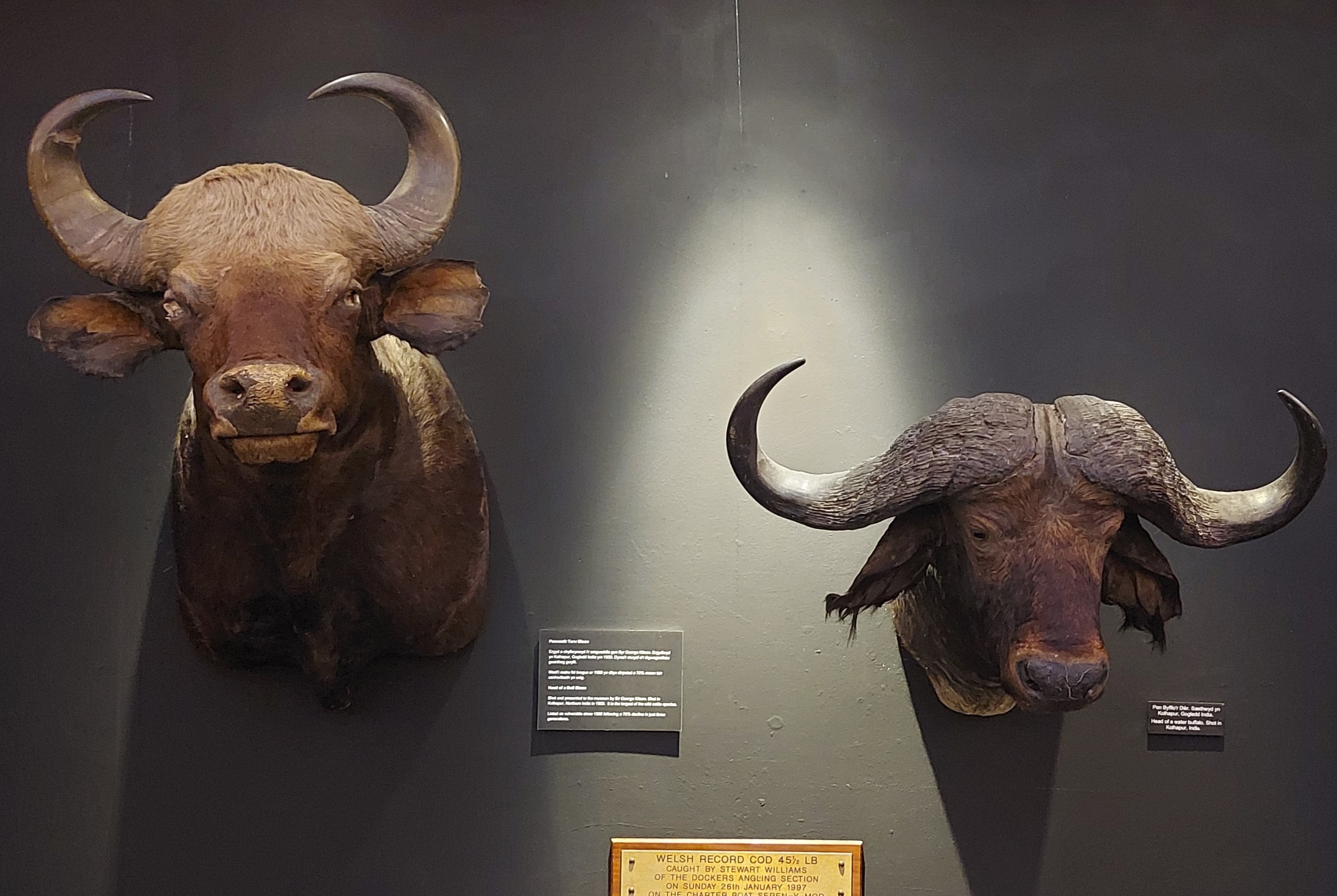
In our Natural History Gallery there were two Bovidae heads mounted on the wall that were in need of care and conservation. Time had taken its toll on the taxidermy heads so Laura, from LR Conservation, came to Swansea Museum to provide the expertise to conserve and clean them.
One is a head of an Indian Gaur Bison. This is the largest species of surviving Bovidae and are capable of killing tigers when provoked. Our bison head came from Kolhapur in Northern India and was donated in 1960. The bison head had serious damage to one horn, which needed to be carefully reattached. It had also been missing its glass eyes for many years.
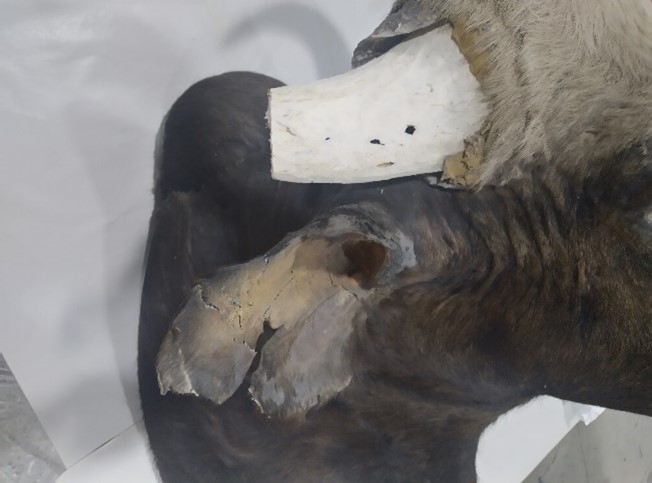
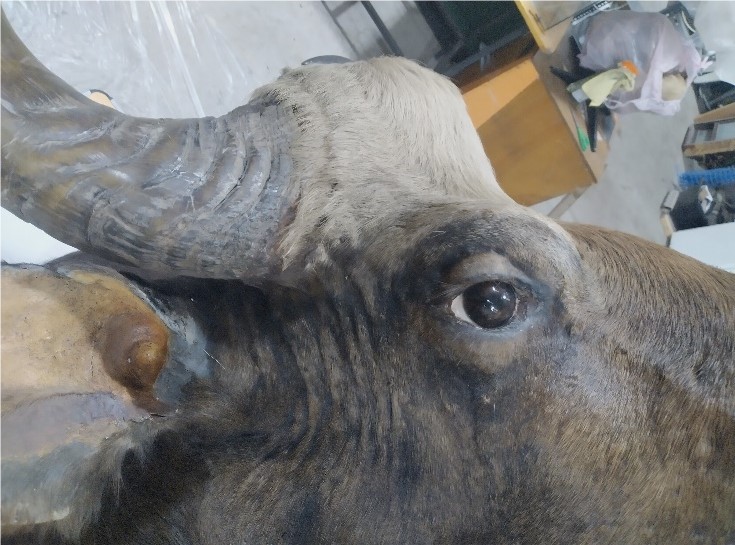
The other Bovidae head is of a Water Buffalo that came from Kolhapur at the same time as the bison. There are two different types of water buffalo: swamp and river. We are still unsure which one our buffalo is. They are usually told apart by their body size, which isn’t terribly helpful with only the head. Our buffalo had shrinkage damage where the fillers used by the original taxidermist had dried up. In addition to some repair work, both heads needed a good conservation clean and polish.
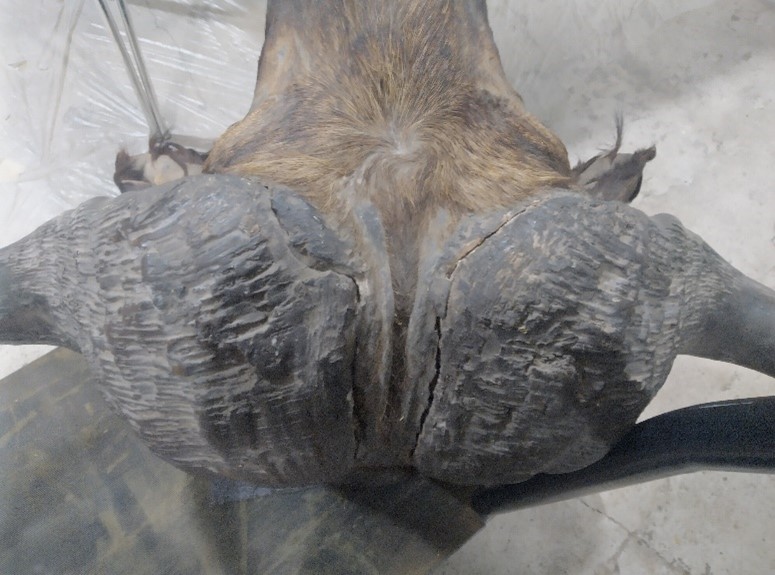
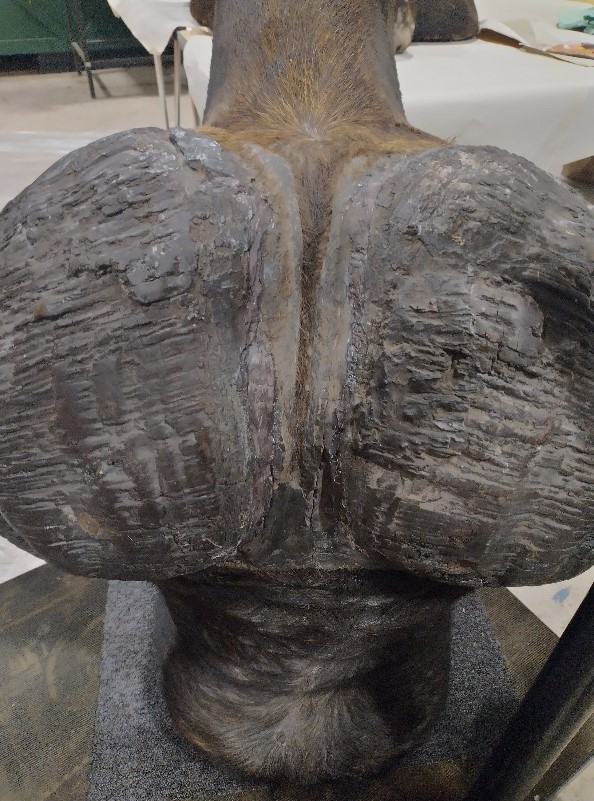
Due to the expertise of the conservator, both heads are squeaky clean with shining eyes and gleaming horns. Once the mounts are made, both heads will be placed back into the Natural History Gallery.

